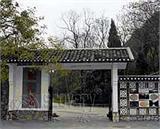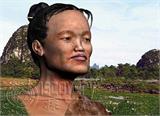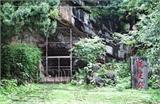Dawn of Civilization (4)
Guilin is a historic and cultural city with a brilliant history. The beauty of Guilin's landscape is known throughout the world, making Guilin's tourism culture another globally recognized brand.
From the items found in the cave such as pottery, clam decorations, clam knives, clam spoons, etc., and the remnants of hearths and fire pits, it can be seen that although the ancestors' craftsmanship was somewhat rough, they had already started to pursue their own artistic endeavors. They also knew how to cook food and learned how to store it. Those hearths and fire pits were where the ancestors used to cook food, make pottery, and gather around the fire. This was an incredible advancement for humanity. In the accumulated rocks within the cave, animal bones from 25 different species were discovered, including even-toed ungulates, carnivores, rodents, and primates. Among the 67 pig bones found, 40 could have their age at death determined, and the pigs' incisors were clearly weaker than those of wild boars. Thus, the conclusion was drawn: at this time, the ancestors living in Zengpiyan had already started primitive domestication activities.
Due to the large quantity and variety of animal bones discovered, the Chinese Academy of Sciences officially named them the "Zengpiyan Site Animal Group." A new genus and species of the deer family, which is unique to the Lijiang River basin of Guilin, was specifically named "the graceful Lijiang Deer."
The Zengpiyan Cave Site has been listed as a national key cultural relic protection unit.
In 1979, Guilin City established the "Guilin Zengpiyan Cave Site Exhibition Hall" and opened it to the public. Due to the lack of detailed periodization during the excavation at that time, along with issues such as older dating of specimens from limestone regions, there was debate in the archaeological community about the age of the Zengpiyan Cave Site. This issue wasn't resolved until the second excavation in 2001.




